Hands Across Montecito: The Updates and Challenges Facing Homelessness Relief
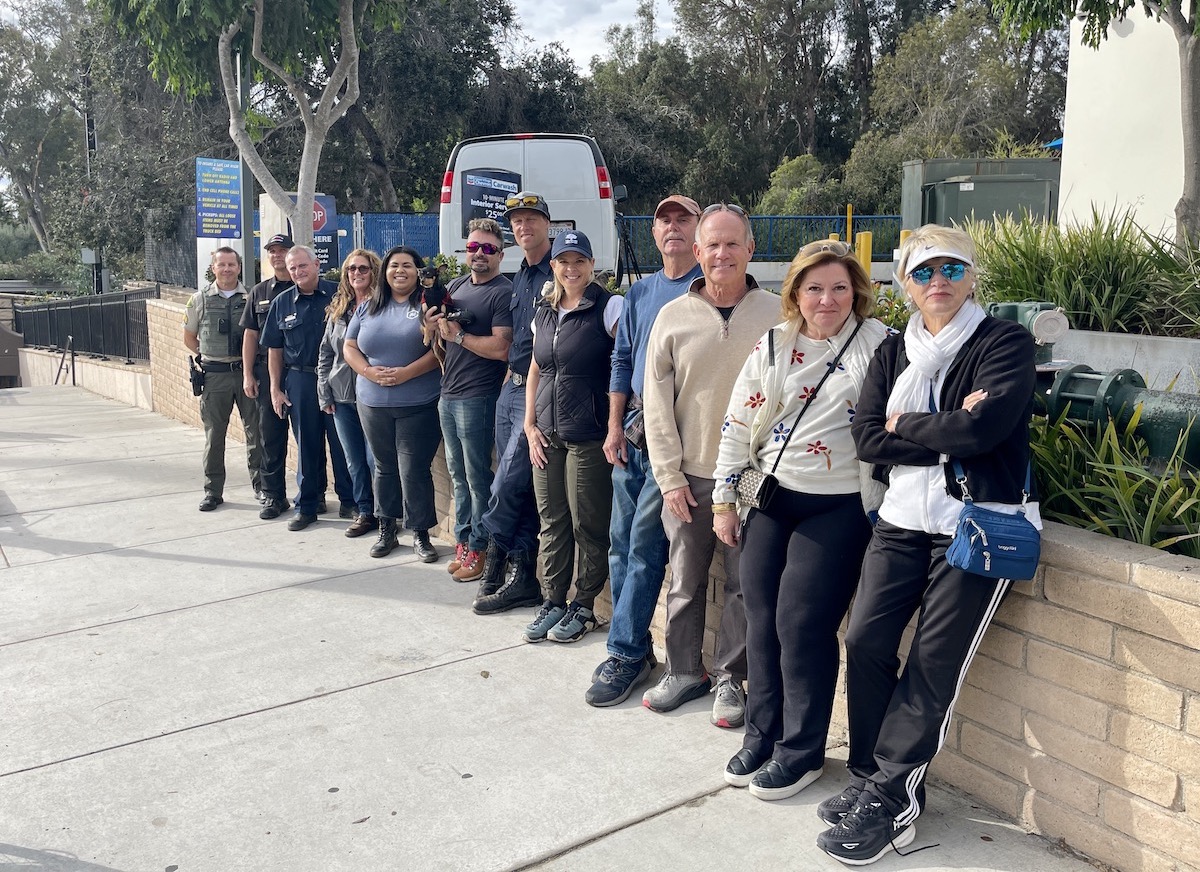
Our group of 10 with morning bleary-eyed faces, meets at the Coast Village Chevron station and trudges down through the newly-rebuilt Butterfly Lane tunnel with its colorful murals. We emerge on the railroad tracks and begin searching from the Bird Refuge to Eucalyptus Lane. As usual, we find only a few people, but there are lots of signs that unhoused people have been sleeping in makeshift camps wherever there’s shrubbery “cover” – near the cemetery, between the freeway ramps near Channel Drive and Cabrillo Boulevard, behind the condominium communities east of Olive Mill Road, and on the beach below the cemetery. There was, we hear, a man seen camping in Manning Park in the Upper Village. We ask each other, is there a photo, does anyone know who he is?
The Montecito Fire experts with us point out many burned-out portable propane canisters littering the ground, signs that groups are building fires, increasing the terrifying potential of fast-spreading dry brush fires. “In the cooler weather there are more fires as people try to keep warm,” says Fire Marshal Aaron Briner. “There’s an incredible risk of fire spreading in this area, and no solution to it.”
Later, we all meet on a Zoom to chat: Whom among the unhoused might be amenable to moving into shelters, into veterans housing, into sober living programs? As we discuss, our Hands Across Montecito (HAM) committee – perhaps a wee bit spoiled by three years of success in moving homeless people toward city, county, and nonprofit services – learns some bad news from county representatives on our call: There are no unclaimed shelter beds in the county.
On the plus side, we are continuing the “large working group” model combining eager-beaver Montecito Association volunteers like me with professionals from City Net, Heal the Bay, various government agencies, and the fire and sheriffs departments. We continue to make weekly/monthly forays into the places where folks are likely to be camping. And we continue identifying camps, interviewing and counseling the unhoused we find, and recording their information into a countywide database. Many people we find, though not all, want to move inside during these winter nights when temperatures drop to the low 40s.
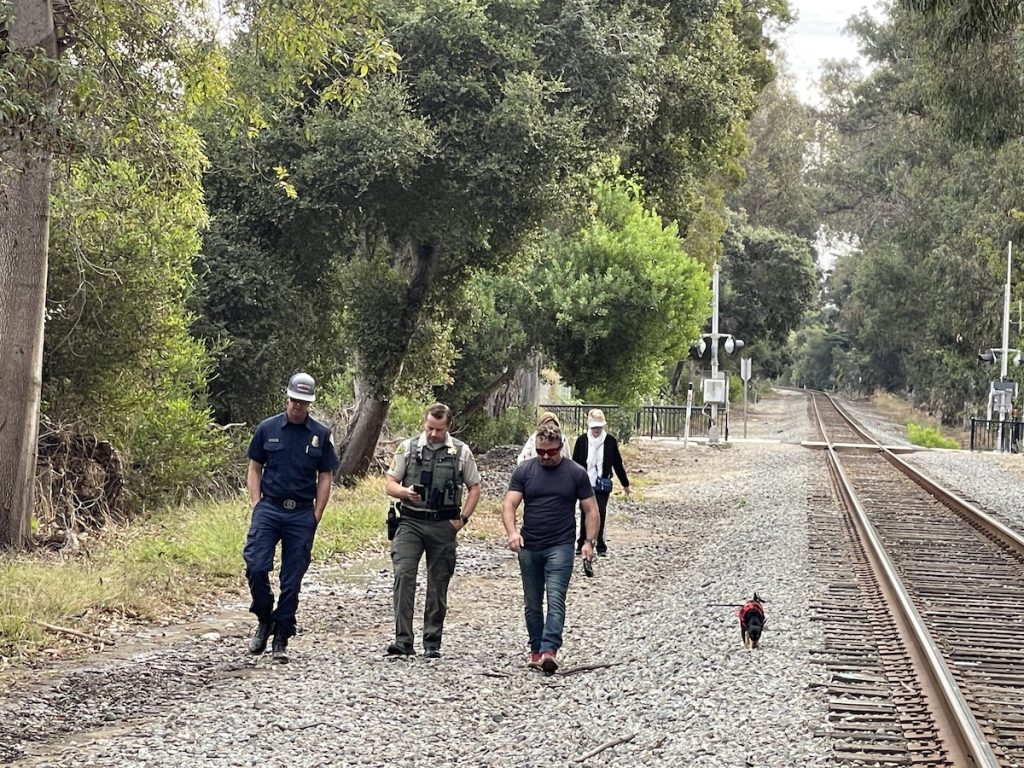
Our new challenges include the inability to quickly clean up the fire-hazardous camps; many are located on land owned by the Union Pacific Railroad, and others are on land owned by CalTrans. Removing debris and brush should be a priority, and we need to open new lines of communication with these entities. We are fortunate that the Montecito Association’s highly capable new Executive Director Houghton Hyatt has taken on the role of liaison to the various owners and will request that they provide clean-up crews – or give us, the volunteers, leave to do it.
On the call, we get the truly bad news regarding the availability of emergency shelter beds indoors for Montecito’s unhoused outdoor sleepers. There are none. No unclaimed shelter beds in the county. And no new dormitory-style shelters are being built in Santa Barbara County, similar to those operated by nonprofits such as the Salvation Army, Union Rescue Mission, and PATH. Accustomed to being able to move anyone we would find into a shelter, a sober-living program, or a program specifically targeted to veterans, we are shocked and pained to learn the grim mathematics of homelessness in our county. Based on the latest point-in-time count, there are nearly 1,900 people sleeping outdoors on any night in the county, about half of them in the South County. Nineteen hundred people needing a safe bed, yet at the most there are 800 shelter beds available. The shelters are full every night.
Andrew Velikanje, a formerly unhoused man who now works with Heal the Ocean on beach and homeless-encampment cleanup and serves on the HAM committee, describes the situation as “lots of homeless pouring in, and we need places to put them.”
Small wonder, then, that when the temporary annual “warming centers” opened at four county churches and agencies last month, 84 souls eagerly lined up on the first night to receive dinner and a bed until 6 am, when the shelters serve breakfast and close for the day. “The fact that on the first night of rain, we had 70 people show up, shows that the need is only going to increase as more and more people need a place to be dry,” the Reverend Julia Hamilton of the Unitarian Society of Santa Barbara, told KEYT. Warming centers are very much needed and are a stopgap that will serve up to 150 unhoused people per night during the winter, but their hours are considered too temporary to count as shelter housing.
During the day, unhoused individuals and families often gravitate to the “neighborhood navigation centers” operated by Santa Barbara Alliance for Community Transformation and others in parks and at churches in the county. They serve lunch, offer medical care, showers, and clothing, and sometimes serve as a way for the homeless to connect to available housing. That is, when it’s available. “The most important goal is to create affordable permanent housing, but the process is slow and expensive,” says Lucille Boss, the county’s encampment response coordinator. At a recent Lompoc meeting discussing homelessness, she recalls, there was shock and outrage among community members upon learning that studio apartments in Lompoc were being rented at $2,200 per month.
Looking Back and Forward
In truth, Montecito’s HAM program has enjoyed more success than many homeless-outreach projects, and in a short period of time. For one thing, we were founded and chaired until very recently by the superbly well-connected former MA Executive Director Sharon Byrne, who also held the powerful position as chair of the county’s Behavioral Wellness Commission. Sharon was known to gently-but-firmly convince shelter nonprofits and sober-living programs to give priority to Montecito’s unhoused individuals. Another factor in our success was California’s Project Roomkey program, which opened up dozens of motel bedrooms to unhoused people beginning in 2020, to alleviate the effects of COVID. The project gave temporary housing to 190 people, and 88 people were able to find permanent housing, according to a report on the project. The state’s Project Homekey funneled $18 million to the county, enabling it to purchase and convert a Goleta Super 8 Motel into 59 housing units. “Funding for homeless projects is shrinking after a big expansion,” says Kimberlee Albers, the county’s homeless assistance project manager.
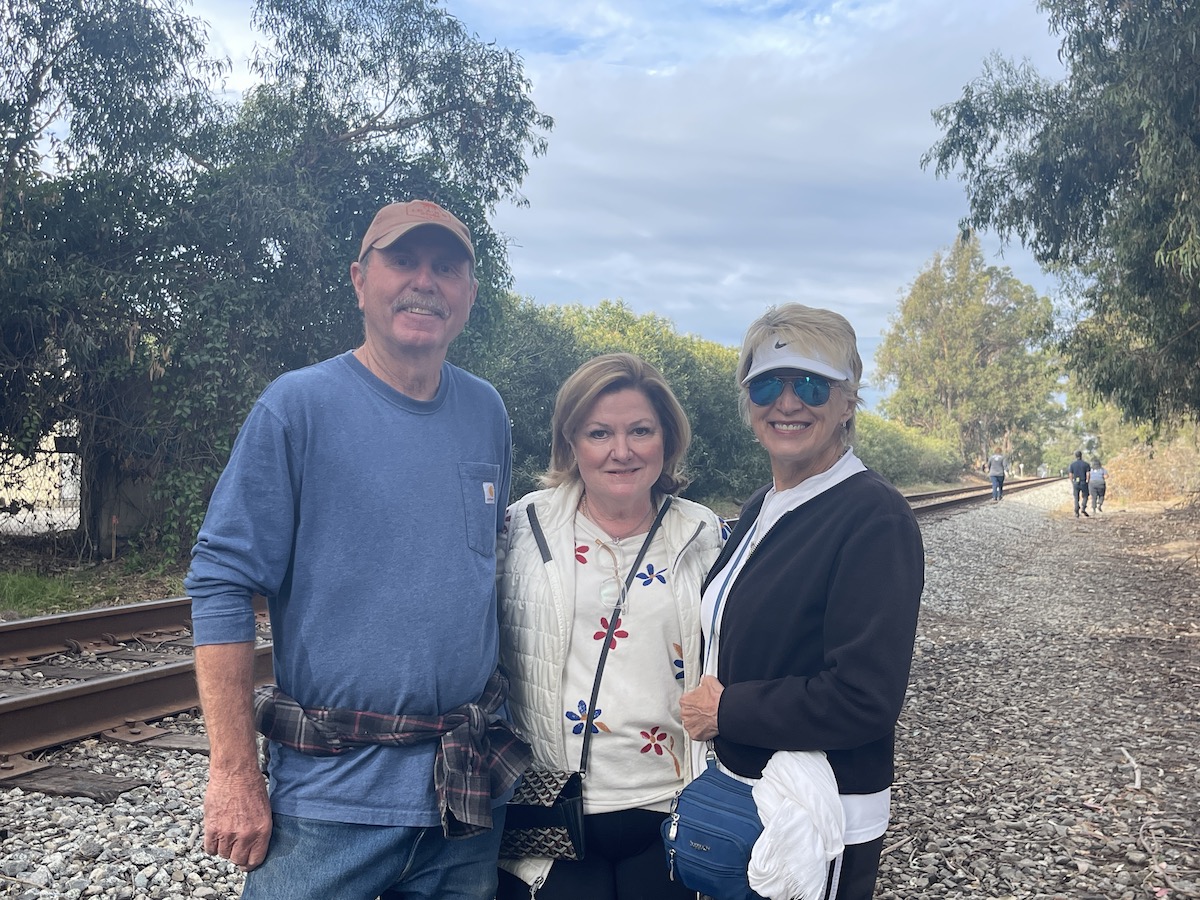
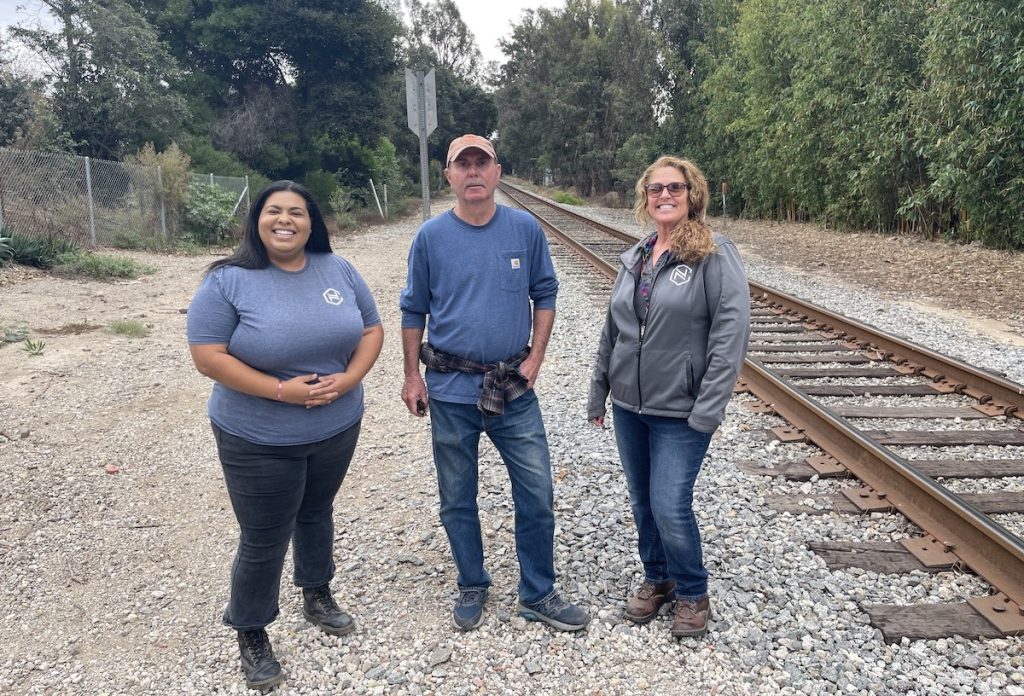
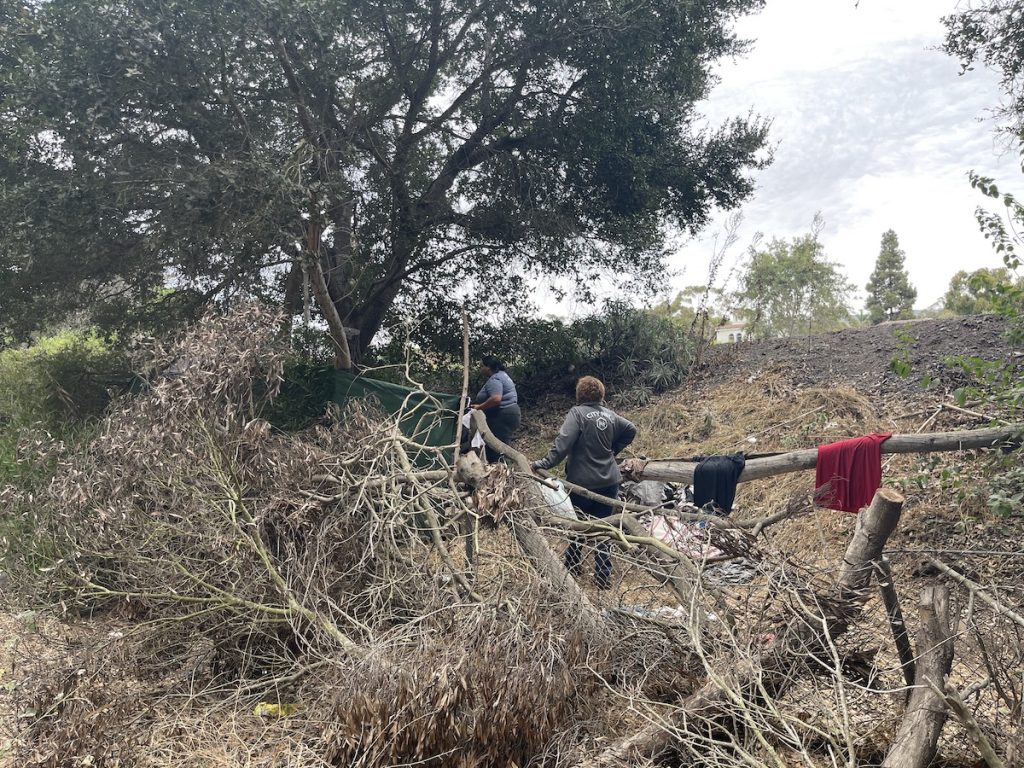
With the state’s budget tightening – part of its $31-billion overall deficit – the HAM committee is suddenly faced with these challenges at a time when housing prices are soaring. A rental-housing survey put the median rent for a two-bedroom South Coast apartment at $3,687 in 2022. A local housing affordability report found that the average rent increased by 31 percent between 2021 and 2023, in a county where half of households are renters. Contributing to those higher costs was inflation, of course, but also competition between local residents and college students for rental housing, spurred in part by “renovictions” in Isla Vista, and landlords’ interest in earning higher returns from converting rental apartments into short-term rentals. It all adds up to more low-income families, some with Section 8 low-income housing vouchers, looking for apartments that don’t exist. One result: a spike in the number of homeless children to 746 in 2022.
This being Santa Barbara, there are some bright spots peeking above the horizon to alleviate what many are calling the “Hamptonization” of South County – creating a desperate lack of reasonably priced housing for the non-one-percenters. The Santa Barbara Foundation commissioned a thoughtful wide-ranging study that recommended ways for the county to build the nearly 10,000 housing units that planners estimate will be needed for families earning just 80% of the area median income by 2031. The cost would be somewhere in the neighborhood of $4.9 billion. Recommended strategies include a countywide affordable housing bond, a city transit occupancy tax, more private-public housing partnerships, and nonprofit sector bridge-capital incentives. (There’s lots more detail at www.sbfoundation.org/housing-affordability-report.)
The county recently received promising state grants, including $9 million for transitional housing for “people experiencing homelessness who have serious behavioral health conditions, including serious mental illness and/or substance use disorder.” This project is sorely needed, as the county this year estimated that 30 percent of unhoused individuals suffered from serious mental illness, and 26 percent from substance abuse. A separate $6 million grant’s purpose is to move 250 unhoused individuals out of “state rights of way and waterways.” However, with demand and supply of shelter spaces so far from equilibrium, one relevant question might be: With no new dorm-style shelter beds in the county, where will those unhoused individuals moved out of harm’s way be housed? (And I would add selfishly, how might the HAM committee access these programs to house the unhoused individuals we encounter who clearly fall into one or the other of the state programs’ criteria?)
For the county, which has overall responsibility for addressing housing issues, the response has been to build additional “tiny homes” projects similar to downtown’s Dignity Moves 35-unit community. There are 174 units under construction to open in 2024, one in Noleta known as Hope Village, and another in Santa Maria, known as La Posada. But again, questions arise about access… Can we get someone found to be homeless in Montecito into these relatively distant tiny-home communities? Moreover, residency in these places is temporary, between six and 12 months; where will formerly homeless folks go next for permanent housing? And there is the fact that tiny-home communities themselves are temporary; they are constructed on land subject to leases from three to five years. What happens next?
In the interim, with needy people eking out a life in Montecito’s byways, the HAM committee is hoping to raise more than $130,000 so that we can reserve four Santa Barbara-area motel rooms, at discount rates, for six months. (Six months is the minimum allowed by law for homeless-related housing.) “This will give us the opportunity to be able to move homeless individuals, when we find them in Montecito, into temporary housing while we try to find something like a shelter bed or a supportive program,” says Al Ortiz, Santa Barbara director of City Net, our nonprofit partner.
“It’s only a temporary plan; we really need to work with the county on a longer-term strategy for a sustainable model for more shelter space,” says Doug Black, Vice President of the MA and a member of the HAM committee.
To learn more information about the HAM program’s accomplishments, and to make a donation to support our committee’s efforts, please visit: montecitoassociation.org/handsacrossmontecito







You must be logged in to post a comment.